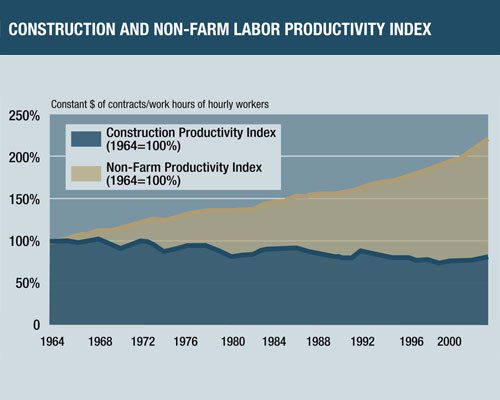Were Subway Builders Cautious Enough?
By SPIEGEL Staff
Many in Germany's fourth biggest city are asking if the collapse of one of Europe's most important historical archives was caused by the construction of an underground railway line. One report suggests work on the line wasn't done as carefully as it should have been.
Early on Sunday morning, emergency workers in Cologne recovered the body of one of the two men missing following the dramatic collapse of the city's historical archive on March 3. He was a 17-year-old baker's apprentice who is believed to have been sleeping in one of the apartments next to the archive that were also destroyed in the disaster. On Monday, firefighters and emergency workers continued the search for a second man believed perished.
Last Tuesday afternoon, the Cologne Historical Archive, one of Europe's most important collections of records dating as far back as 922, suddenly disappeared into a cloud of dust and a pile of rubble. After the sounds of buckling began, archive staff and visitors had enough time to escape the building, but its vast historical holdings didn't prove as fortunate.
PHOTO GALLERY: SALVAGING COLOGNE'S DESTROYED HISTORICAL ARCHIVE
Click on a picture to launch the image gallery (10 Photos)
Increasingly, evidence is suggesting the catastrophe was caused by construction of an underground railway line beneath a densely populated street in Germany's fourth-largest city. The Cologne-based Kölner Stadt-Anzeiger newspaper and SPIEGEL both reported over the weekend that city officials may not have taken earlier expert reports warning of potential problems seriously enough.
On Sunday, the head of the Cologne public transport operator Kölner Verkehrs-Betriebe (KVB), apologized to the families of victims as well as neighbors in the city's Severin Quarter neighborhood. He said regardless of questions of guilt and responsibility, "These have been terrible days and horrible hours."
Quoting an unnamed source close to the investigation into the accident, the Kölner Stadt-Anzeiger reported Monday that the tragedy was likely caused by ground water seepage at the construction site. "Everything points to a problem with the ground water," the source told the paper. City prosecutors have now appointed several experts to determine exactly what happened at the underground railway construction site. They are trying to determine whether water seeped in through the more than one-meter thick concrete side wall or came up through the floor, which hadn't been finished. They are also looking into whether the problems might be related to rising levels of the Rhine River, which is located very close to the archive.
Last week's disaster has left residents in the city, which recently celebrated its world-famous Carnival season, shaken and angry. A nearby school remains evacuated and apartments next to the archive were also sucked into the 28-meter sinkhole. Many locals are afraid of the next accident.
"I have lost trust," said retiree Eva Böll. After all, engineers, politicians and managers at KVB had kept on making assurances that the construction of the city's north-south underground railway line was absolutely safe. They continued to make that claim even as an increasing number of residents whose homes were located above the 4 kilometer-long tunnel reported cracks and subsidence in their homes, and costs soared from a planned €630 million to close to €1 billion.
PHOTO GALLERY: COLOGNE TRIES TO SAVE ITS PAST
Click on a picture to launch the image gallery (13 Photos)
Doubts began to surface right at the beginning over whether the Cologne underground line was being constructed using the utmost professional standards.
In autumn 2004, experts commissioned by the company that insures KVB began to investigate the nearby St. Johann Baptist Church, whose tower (just a few hundred meters down the street from the archive), was suddenly listing like the Leaning Tower of Pisa. The listing church steeple was the first sign in the city that construction of the underground line might be creating serious problems for the Severin neighborhood.
The highly technical 90-page findings weren't exactly reassuring. The experts warned of "loosening of the ground and cavity formations" caused by the construction of the underground line that was inevitable in some areas, but could have been avoided in others. If a little more care had been taken, the report warned, construction workers might have been able to prevent a situation where a church tower suddenly threatened to topple into several apartment buildings.
Another report from experts at the engineering firm Zorn soberly noted that the soil beneath the church hadn't always been sufficiently reinforced during tunneling work. For example, during the construction of a supply tunnel, fast-hardening bentonite rings weren't always immediately put in place. That, the report warned, left a "cavity that could pull in surrounding ground." The result was that the tower listed by 77 centimeters -- 15 times greater than had been previously calculated.
In the end, the experts concluded there was no danger of collapse, and the city's public prosecutor's office closed its investigation in 2004 into the possibility the church building had been placed in danger by the construction. In light of Tuesday's historical archive disaster, however, prosecutors now want to review the study again.
Now the city's public prosecutor's office is investigating possible charges of manslaughter, bodily harm and endangering buildings, but it hasn't named any suspects or organizations yet.
So far, city officials, KVB and companies involved in the construction are deflecting responsibility or blame for the deadly accident that also saw the loss of much of the city's historical legacy. Among those backpeddling was Cologne Mayor Fritz Schramma, who right after the accident decried the tunneling of an underground train line in such a densly populated area to be "almost irresponsible," only to back away from his statement later under pressure from public transport officials.
A spokesman for the mayor did concede last week, however, that spot tests of the soil around the city archive had only been conducted before the city made the tender offer and prior to the begin of construction on the underground line. There were no subsequent soil tests once construction work had started. The city followed the standard procedure. But given the nature of Cologne's soil -- a mixture of gravel and sand -- and its abundant ground water, many are now asking if standard procedures had been enough.
Workers at Bilfinger Berger, the German company leading construction of this part of the underground line, have said internally that planners may have forgotten to take account of the particular impact that the weight of the books and the water were having on this problematic soil.
PHOTO GALLERY: 'IT LOOKED LIKE SEPT. 11'
Click on a picture to launch the image gallery (9 Photos)
It's also possible that city administrators failed to take a recent report on structural damage at the city archive as seriously as it should have. A worker at an engineering firm in the nearby city of Leverkusen inspected eight conspicuous areas within the building: an expansion joint in the concrete ceiling, in which a crack the size of a hand had formed, and cracks in the flooring in the basement boiler room. In a "static respect, harmless," the expert wrote. In order to "prevent further damage to the structure," though, he advised that other experts be brought in.
At the time, the head of the city's building department, Bernd Streitberger, didn't see "any reason" to do so. Today, he says, "you would read a sentence like that differently than you would have back then."
Meanwhile, efforts are now beginning to salvage whatever cultural heritage may have survived the disaster -- but it is slow going, since the site of the collapse is still dangerous and rainfall threatens to cause further damage to delicate documents and artifacts. The archive held documents from over 1,000 years of Cologne history, and the damage caused by the collapse is expected to be worse than the 2004 fire at Weimar's Anna Amalia library, which saw the destruction of 50,000 books mostly from the 19th century.
The archive documents Cologne's history back to 922. Right up into the late Middle Ages, Cologne was, along with Paris, the most important city in Europe north of the Alps. Around 25,000 of the 65,000 public records held in the archive are now believed to be among the rubble. The archive also included 780 bequests, 104,000 historical maps and plans, 50,000 posters, 500,000 photos and 26 kilometers of files.
One of the most valuable documents in the collection is a parchment letter from Albertus Magnus (dating from between 1200 and 1280), a famous Dominican monch who taught in Cologne. It includes a commentary on St. Matthew's Gospel and its value is estimated at €4 million. In addition to its wealth of medieval documents, the archive also included the bequests of numerous collectors, architects, authors and celebrities. They included the papers of the man responsible for construction of the Cologne Cathedral, a UNESCO World Heritage Site, handwritten scores by composers Jacques Offenbach and Max Bruch, manuscripts by Karl Marx and 380 boxes of documents from Nobel Prize for literature recipient Heinrich Böll. Together, the archive's holdings are valued at an estimated €400 million.
For archivists, archeologists and restorers, the work in the coming months of finding artifacts that haven't been totally destroyed will be like piecing together a puzzle from the dust and rubble.
Reported by Matthias Bartsch, Andrea Brandt, Guido Kleinhubbert and Mathias Schreiber.



![[transport funding]](http://s.wsj.net/public/resources/images/NA-AW361_ROADDE_NS_20090308180832.gif)
















